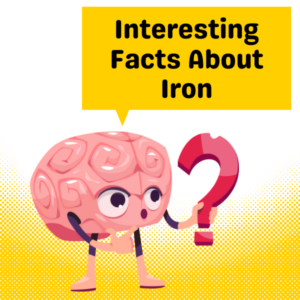Praseodymium, a rare earth element with the atomic number 59, is known for its fascinating properties and applications. In this article, we will explore some interesting facts about praseodymium that will surely pique your curiosity.
One intriguing fact about praseodymium is its unique color-changing ability. When exposed to air, praseodymium develops a thin oxide layer that alters its appearance.
Initially, it has a silvery-white luster, but over time, it gradually transforms into a vibrant yellow color. This phenomenon makes praseodymium a captivating element to observe.
Another cool fact about praseodymium is its magnetic properties. It is considered a ferromagnetic material, meaning it can be magnetized and retains its magnetism even after the external magnetic field is removed.
This property makes praseodymium crucial in the production of powerful magnets used in various applications, including electric motors and generators.
Furthermore, praseodymium plays a significant role in the field of optics. It is utilized in the production of specialized glass, such as didymium glass, which is commonly used in welding goggles and lenses for glassblowing.
Praseodymium’s ability to absorb specific wavelengths of light makes it an essential component in these optical devices, ensuring the safety and efficiency of the users.
Interesting Facts About Praseodymium
The Rare Earth Element with a Unique Name
Praseodymium, derived from the Greek words “prasios” meaning green and “didymos” meaning twin, is a rare earth element with a captivating name.
A Vibrant Green Flame
When praseodymium is burned, it produces a mesmerizing green flame, adding a touch of magic to fireworks and pyrotechnic displays.
Hidden in Your Glasses
Praseodymium is used in the production of certain types of glass, such as didymium glass, which is commonly found in welding goggles and camera lenses.
Powerful Magnets
This element is a key component in the creation of powerful magnets, particularly those used in headphones and other audio devices.
Shades of Praseodymium
Praseodymium compounds can exhibit a range of beautiful colors, including yellow, green, and even pink, making them valuable in the field of pigments.
Radioactive Decay
Praseodymium has a radioactive isotope, praseodymium-143, which undergoes beta decay, emitting radiation as it transforms into neodymium-143.
Found in Monazite
Praseodymium is primarily obtained from the mineral monazite, which is found in abundance in certain parts of the world, including India and Brazil.
Team Player in Alloys
This element is often used as an alloying agent, enhancing the properties of metals such as magnesium and aluminum, making them stronger and more durable.
Praseodymium in Lasers
Praseodymium-doped lasers are utilized in various applications, including medical procedures, telecommunications, and scientific research.
Lighting Up the Night
Praseodymium is employed in the production of specialized lighting, such as high-intensity discharge lamps, which are used in streetlights and sports arenas.
Praseodymium’s Role in Batteries
Praseodymium is being explored as a potential component in rechargeable batteries, as it has the ability to store and release electrical energy efficiently.
Praseodymium’s Magnetic Personality
Due to its magnetic properties, praseodymium is utilized in magnetic resonance imaging (MRI) machines, aiding in the diagnosis of various medical conditions.
Praseodymium’s Role in Nuclear Reactors
Praseodymium is used as a neutron absorber in nuclear reactors, helping to control the rate of fission reactions and maintain the stability of the reactor.
Praseodymium’s Impact on the Environment
The extraction and processing of praseodymium can have environmental consequences, highlighting the need for sustainable practices in its production.
Praseodymium’s Role in Ancient Artifacts
Praseodymium has been detected in ancient artifacts, such as Roman glass, providing insights into the historical use of this element in human civilization.
Praseodymium’s Role in Catalysts
Praseodymium compounds are employed as catalysts in various chemical reactions, facilitating the conversion of substances and increasing reaction rates.
Praseodymium’s Role in Optics
Praseodymium is utilized in the production of optical fibers, enabling the transmission of light signals over long distances in telecommunications systems.
Praseodymium’s Role in Solar Cells
Researchers are exploring the use of praseodymium in solar cells, aiming to improve their efficiency and harness the power of sunlight more effectively.
Fun Facts About Praseodymium for Students and Kids
1. Praseodymium is a rare earth element.
Praseodymium is one of the 17 rare earth elements found in the Earth’s crust, but it is relatively scarce compared to other elements.
2. It was discovered in the late 19th century.
Praseodymium was first discovered in 1885 by Carl Auer von Welsbach, an Austrian chemist and inventor.
3. Its name comes from the Greek words for “green twin.”
The name “praseodymium” is derived from the Greek words “prasios” meaning green and “didymos” meaning twin, referring to its greenish color and similarity to neodymium.
4. Praseodymium is used in certain types of glass.
Due to its ability to absorb and transmit light, praseodymium is used in the production of special glasses, such as goggles for glassblowers and welders.
5. It has a unique magnetic property.
Praseodymium exhibits a property called “magnetic anisotropy,” which means it has a preferred direction of magnetization. This makes it useful in magnets and magnetic alloys.
6. Praseodymium is found in minerals like monazite and bastnäsite.
Praseodymium is primarily obtained from minerals such as monazite and bastnäsite, which are rich sources of rare earth elements.
7. It has a bright yellow-green fluorescence.
When exposed to ultraviolet light, praseodymium emits a bright yellow-green fluorescence, making it useful in certain types of lighting and phosphors.
8. Praseodymium is used in the production of high-strength metals.
Praseodymium is added to alloys, such as magnesium alloys, to improve their strength and resistance to corrosion.
9. It is not found in its pure form in nature.
Praseodymium is always found in combination with other elements and must be extracted and purified to obtain it in its pure form.
10. Praseodymium has a silvery-white appearance.
In its pure form, praseodymium has a silvery-white appearance, similar to other rare earth elements.
11. It is used in certain types of lasers.
Praseodymium-doped lasers are used in various applications, including medical treatments, laser pointers, and scientific research.
12. Praseodymium is not toxic to humans.
Unlike some other rare earth elements, praseodymium is not considered toxic and does not pose a significant health risk to humans.
Most Common Uses of Praseodymium
1. Magnets and Magnetic Alloys
Praseodymium is widely used in the production of powerful magnets, particularly in combination with neodymium and other rare earth elements.
These magnets are essential components in various applications, including electric motors, generators, and hard disk drives. Praseodymium-based magnets exhibit excellent magnetic properties, high coercivity, and strong resistance to demagnetization, making them crucial in modern technology.
2. Glass and Ceramics
Praseodymium compounds are utilized in the manufacturing of specialized glass and ceramic products. When added to glass, praseodymium imparts a unique yellow-green color, which is highly desirable in certain optical applications, such as camera lenses and goggles.
Additionally, praseodymium oxide is employed as a catalyst in the production of ceramics, enhancing their mechanical strength and thermal stability.
3. Carbon Arc Lighting
Praseodymium is utilized in carbon arc lighting, a type of lighting technology commonly used in film and television production. When an electric current passes through a carbon electrode containing praseodymium, it produces a bright and intense light.
This light source is ideal for capturing high-quality images and videos, as it provides excellent color rendering and high luminosity.
4. Alloying Agent
Praseodymium is often added as an alloying agent in various metal alloys to improve their mechanical properties. It enhances the strength, ductility, and corrosion resistance of alloys, making them suitable for applications in the aerospace, automotive, and construction industries.
Praseodymium alloys are particularly useful in components that require high strength-to-weight ratios, such as aircraft parts and structural materials.
5. Catalysts
Praseodymium compounds, such as praseodymium oxide, are employed as catalysts in several chemical reactions. These catalysts facilitate the conversion of raw materials into desired products by accelerating the reaction rate and increasing efficiency.
Praseodymium catalysts find applications in the production of polymers, pharmaceuticals, and petroleum refining processes.
6. Laser Technology
Praseodymium-doped crystals, such as praseodymium-doped yttrium aluminum garnet (Pr:YAG), are utilized in solid-state lasers.
These lasers emit a specific wavelength of light that is suitable for various applications, including laser welding, cutting, and medical procedures. Praseodymium-based lasers are known for their high energy efficiency and precise beam control.
7. Nuclear Reactors
Praseodymium is used in the nuclear industry as a neutron absorber and control rod material in nuclear reactors. It helps regulate the rate of nuclear fission reactions by absorbing excess neutrons, thereby maintaining the stability and safety of the reactor.
Praseodymium’s excellent thermal and mechanical properties make it a reliable material for this critical application.
Chemistry of Praseodymium
Praseodymium, symbolized as Pr and atomic number 59, is a rare earth metal that belongs to the lanthanide series of elements. It was discovered in 1885 by the Austrian chemist Carl Auer von Welsbach.
Praseodymium is named after the Greek words “prasios” and “didymos,” meaning green twin, due to its greenish appearance when exposed to air.
Discovery and History
The discovery of praseodymium can be attributed to the work of Carl Auer von Welsbach, who was investigating the composition of didymium, a mixture of rare earth elements.
He successfully separated didymium into two distinct elements, which he named praseodymium and neodymium. Praseodymium was isolated by reducing praseodymium chloride with potassium.
Praseodymium’s unique properties and applications were not fully explored until the 20th century. It was primarily used in the production of carbon arc lamps, which were widely used in the early days of cinema.
Over time, its applications expanded to include the production of magnets, lasers, and as a catalyst in various chemical reactions.
Basic Chemistry
Praseodymium is a soft, silvery-white metal that is highly reactive and easily oxidizes when exposed to air. It has a relatively low melting point of 931 degrees Celsius and a boiling point of 3,120 degrees Celsius.
Praseodymium is paramagnetic, meaning it is weakly attracted to magnetic fields.
In terms of its chemical properties, praseodymium readily reacts with water, acids, and oxygen. It forms various compounds, such as praseodymium oxide (Pr2O3) and praseodymium chloride (PrCl3).
These compounds are used in the production of ceramics, glass, and as catalysts in organic synthesis.
Interesting Physical Properties of Praseodymium
1. Soft and Malleable
Praseodymium is a soft and malleable metal, which means it can be easily shaped or formed into different shapes without breaking. It has a hardness similar to that of lead and can be cut with a knife.
This property makes it useful in various applications where malleability is required, such as in the production of certain alloys and as a component in some electronic devices.
2. Silvery-White Appearance
Praseodymium has a silvery-white appearance, similar to other rare earth metals. Its shiny surface gives it an attractive and lustrous look. This property, combined with its malleability, makes it a popular choice for decorative purposes, including jewelry and other ornamental items.
3. High Melting Point
Praseodymium has a relatively high melting point of 931 degrees Celsius (1708 degrees Fahrenheit). This property makes it suitable for applications that require materials to withstand high temperatures, such as in the production of certain ceramics, glass, and specialized alloys used in aerospace and automotive industries.
4. Paramagnetic Behavior
Praseodymium exhibits paramagnetic behavior, meaning it is weakly attracted to magnetic fields. This property makes it useful in various magnetic applications, including the production of magnets and magnetic alloys. It is also used in certain scientific research and medical imaging techniques that rely on magnetic properties.
5. Good Conductor of Electricity
Praseodymium is a good conductor of electricity, although not as efficient as some other metals. Its electrical conductivity makes it suitable for use in electrical circuits and devices, such as in certain types of resistors and capacitors. It is also used in the production of certain alloys that have specific electrical properties.



